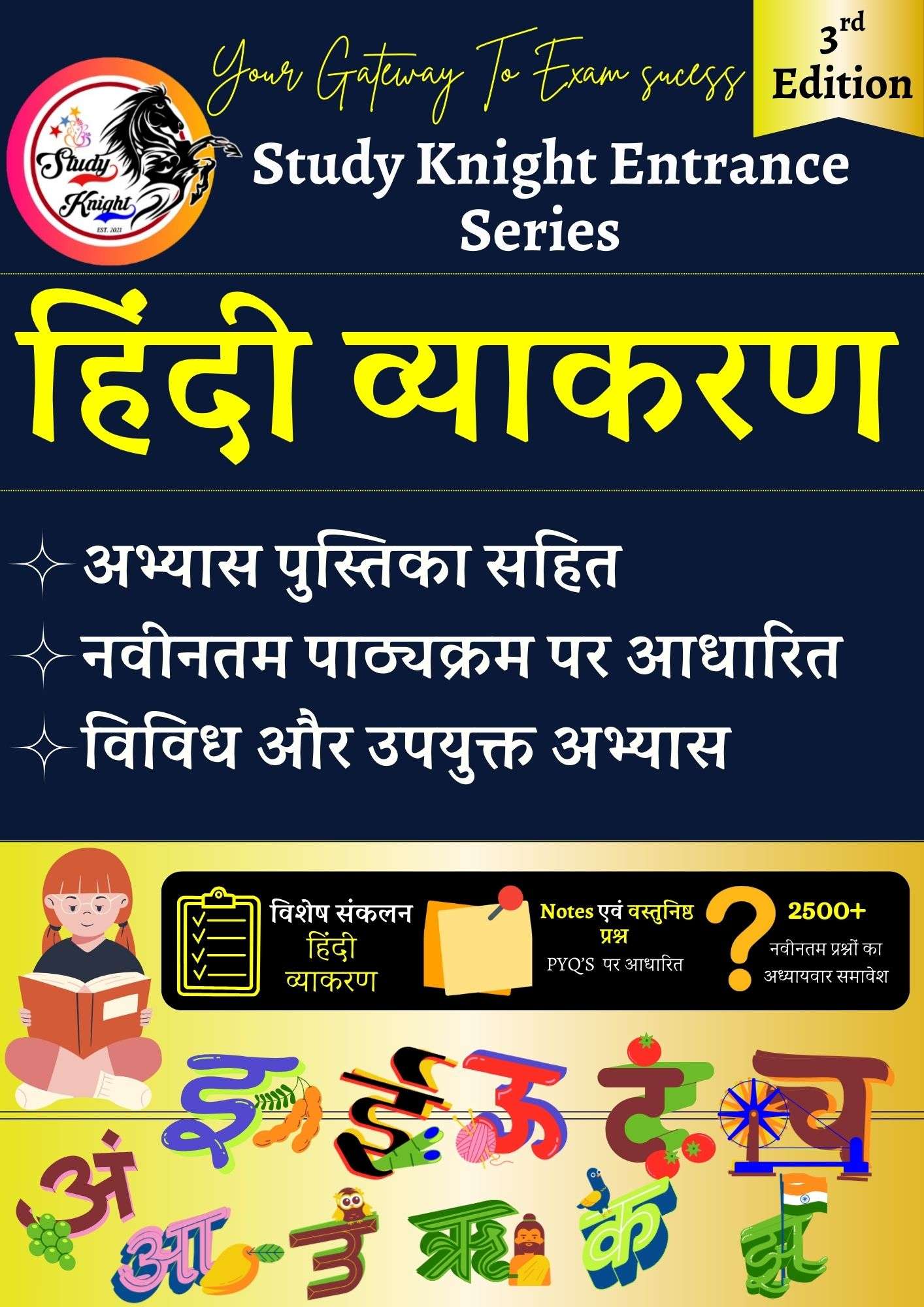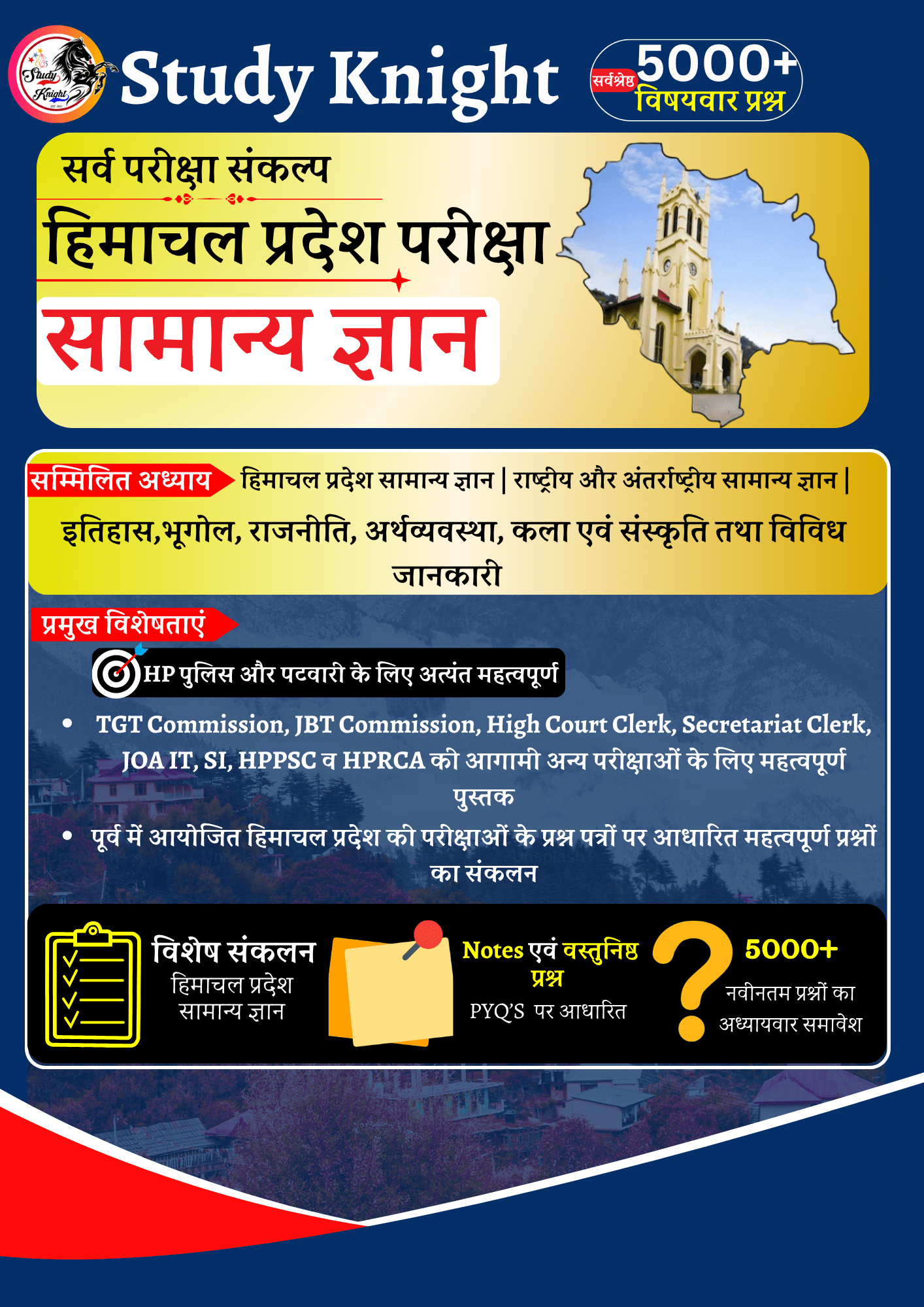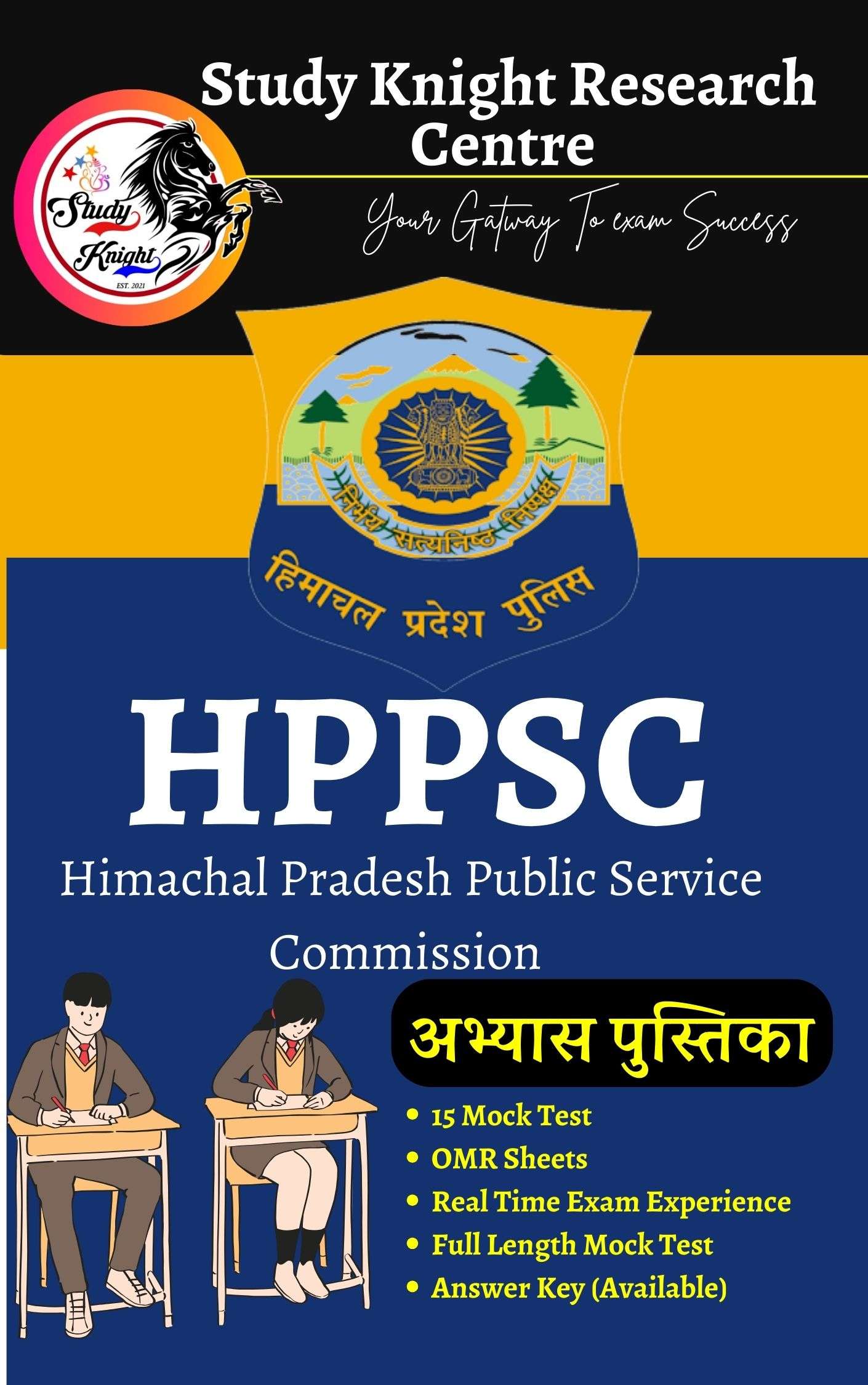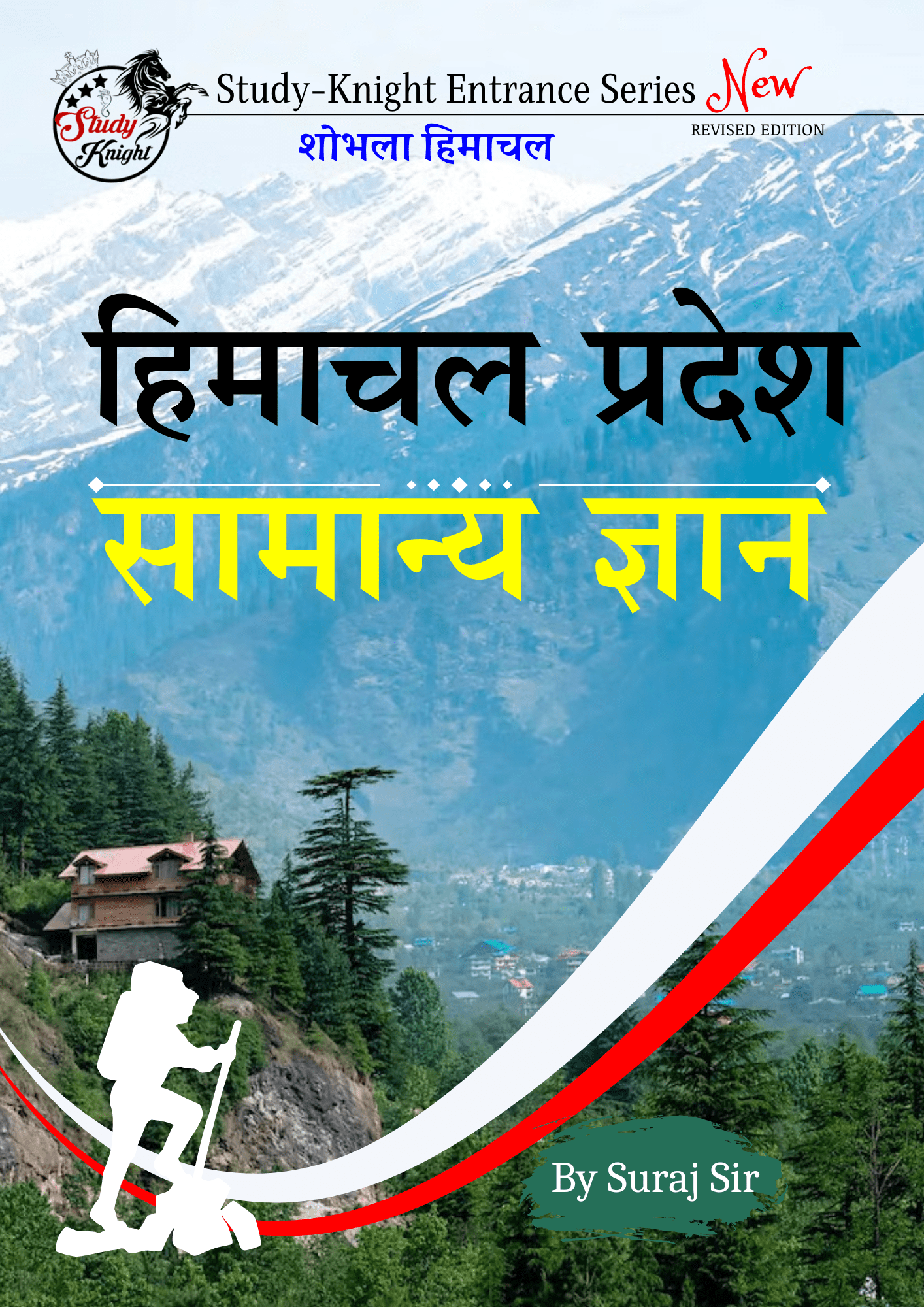Table of Contents
Geography of Una Dsitrict Himachal Pradesh
Geographic Position
Official Site Of UNA District : https://hpuna.nic.in/
Area and Location:
- Area: Approximately 1,550 square kilometers
- Location: Bordered by Bilaspur to the north, Hamirpur and Kangra districts to the east, Punjab state to the south, and Chamba district of Himachal Pradesh to the west.
- Coordinates: Between latitude 31° 16′ 30″ and 31° 38′ 15″, and longitude 76° 19′ 30″ and 76° 59′ 00″
Geographical Structure:
- Land Type: Mainly consists of plain and foothill regions.
- Mountain Ranges: Part of the Shivalik hills and includes small hills and streams in the Dharamshala region.
- River System: Main rivers are the Sutlej and Beas.
Major Geographical Regions
Una Shivalik:
- Location: Around the Son Valley, including the western Haroli sub-tehsil, the northwest part of Una tehsil, and the western, northern, and eastern parts of Amb and Bangana tehsils.
- Streams: Major streams include the Sola Singhi Nala, Chomukhi Nala, Dhionsar Nala, and Ramgarh Nala.
- Elevation: Ranges between 433 meters to 1,162 meters above sea level.
Son Valley:
- Location: Extends on both sides of the Son River, covering parts of Haroli tehsil, Una tehsil, central and southern parts of Amb tehsil, and a small part of Bangana tehsil.
- River System: Features the Son River and its tributaries.
- Geographical Features: Fertile and flat, with elevations ranging from 332 meters to 554 meters above sea level.
Sutlej Basin:
- Location: Covers the eastern part of Una district, including the central and southern parts of Bangana tehsil and the southeastern corner of Una tehsil.
- River System: Includes the Loonkhar Khad and Bangar Nala.
- Elevation: Ranges from 462 meters to 867 meters above sea level.
Water Drainage and Climate
Water Drainage:
- Sutlej River: Flows through parts of Bangana tehsil and enters Punjab near Bharmoti village. It is a significant water resource, though most of its water is used in Punjab for irrigation.
- Son River: Originates from Daulatpur Chowk in Amb tehsil and flows into Punjab at Santokhgarh in Una tehsil. It is a seasonal river, with most flow during the monsoon season.
- Govind Sagar Reservoir: An important part of the district’s water management system.
- Loonkhar Khad: A significant khad that plays a role in water drainage.
- Tanks: There are about 130 seasonal and perennial tanks spread over 65 hectares, aiding in rainwater harvesting and water resource management.
Climate:
- Type: Sub-tropical to temperate.
- Summer: Very hot.
- Winter: Day temperatures are cool, and nights are cold.
- Rainfall: Heavy rainfall occurs in the upper hills, with monsoon rains affecting the plain areas. Seasonal floods from the Son River can cause soil erosion and damage.
Rainfall and Temperature:
- Average Annual Rainfall: 1,329.8 mm (recorded in 2009)
- Maximum Temperature: Up to 39.5°C in May
- Minimum Temperature: As low as 2.3°C in January
The unique geographical and climatic conditions of District Una contribute to its diverse natural resources, agricultural activities, and regional development opportunities.
Una District Overview
Location and Borders:
- State: Himachal Pradesh, India
- Borders:
- North: Kangra and Hamirpur districts (Himachal Pradesh)
- South: Hoshiarpur and Rupnagar districts (Punjab)
- West: Bilaspur district (Himachal Pradesh)
Administrative Divisions:
- Tehsils: Ghanari, Haroli, Amb, Bangana, and Una
- Historical Context: Una was a tehsil of Hoshiarpur district until the Punjab Reorganisation Act of 1966 and of Kangra district until 1972, after which it became a district of Himachal Pradesh.
Geography
Terrain:
- General: Predominantly plain with semi-hilly areas.
- Mountain Ranges:
- Western Side: Shivalik Hills
- Eastern Side: Solah Singhi Range
Rivers:
- Satluj River: Flows through the southern part of the district near Nangal Dam.
- Beas River: Passes through the northern part of the district near Pong Dam and Talwara.
- Swan River: A seasonal river known as the “soul of Una,” flowing 65 km across the Jaswan Valley and merging into the Sutlej River near Anandpur.
Altitude:
- Plains: More than 409 meters above sea level.
- Hills: Over 1000 meters above sea level.
Demographics
Historical Population Growth:
- 1901: 165,000
- 1911: 161,786 (−0.20% p.a.)
- 1921: 161,856 (+0.00% p.a.)
- 1931: 170,620 (+0.53% p.a.)
- 1941: 194,249 (+1.31% p.a.)
- 1951: 196,829 (+0.13% p.a.)
- 1961: 226,696 (+1.42% p.a.)
- 1971: 261,357 (+1.43% p.a.)
- 1981: 317,422 (+1.96% p.a.)
- 1991: 378,269 (+1.77% p.a.)
- 2001: 448,273 (+1.71% p.a.)
- 2011: 521,173 (+1.52% p.a.)
Current Statistics (2011 Census):
- Population: 521,173
- Rank: 543rd in India (out of 640 districts)
- Population Density: 338 inhabitants per square kilometer (880/sq mi)
- Population Growth Rate (2001-2011): 16.24%
- Sex Ratio: 977 females for every 1,000 males
- Literacy Rate: 87.23%
- Urban Population: 8.62%
- Scheduled Castes: 22.16%
- Scheduled Tribes: 1.65%
Religion (2011 Census)
- Hinduism: 92.13%
- Sikhism: 4.99%
- Islam: 2.74%
- Other or Not Stated: 0.14%
Languages (2011 Census)
- Hindi: 39.51%
- Punjabi: 29.68%
- Pahadi: 23.40%
- Haryanvi: 3.34%
- Dogri: 1.01%
- Others: 3.06%
Local Languages:
- Hindi: Widely spoken across the district.
- Punjabi: Predominantly in the plains of Ghanari, Haroli, Una, and parts of Amb tehsils.
- Pahari: Commonly spoken in Bangana tehsil and parts of Amb tehsil such as Chintpurni.
Una district’s geographical and demographic characteristics contribute to its unique cultural and social fabric, reflecting a blend of plain and hilly terrains, a rich diversity of languages and religions, and a growing population.
Places of Interest in Una District
Una Town:
- Location: District headquarters situated by the Swan River, a tributary of the Sutlej River.
- Historical Significance:
- The river is mentioned in ancient texts, including the Ramayana and Rig Veda.
- Una was part of the Jalandhar Doab region and recorded in the Mughal-era treatise “Aainey Akbari.”
- Notable Features:
- Bedi Family: The town is known for the Bedi family, descendants of Guru Nanak. Baba Kaladhari, an ancestor, settled here and attracted many followers.
- Bedi Sahib Singh Mausoleum: Features a golden dome and overlooks the valley.
- Expansion: Una has grown significantly as a commercial and trade hub.
Dharamshala Mahanta:
- Location: Near the Goddess Chintpurni temple, about 62 km from Una.
- Historical Background: Established by Baba Nakodar Dass during Mughal Emperor Akbar’s reign. It has historical significance and murals from the late 19th century.
- Features:
- Murals: The priory contains murals that reflect a rich cultural heritage, though some have deteriorated over time.
- Cultural Importance: Visitors to the Goddess Chintpurni shrine often visit Dharamshala Mahanta as well.
Shiv Bari – Gagret:
- Location: On the Hoshiarpur-Dharamsala road, near Gagret on the banks of the Swan River.
- Historical Significance: Believed to be an archery practice site for Guru Dronacharya’s pupils. The temple was constructed by Guru Dronacharya for his daughter Jayati to worship Shiva.
- Features:
- Temple: Thousands visit during July/August, bringing offerings to the Shiva linga.
- Forest: The surrounding forest is thick and is protected from being used for other purposes.
Pir Nigaha – Basoli:
- Location: About 8 km from Una, in Basoli village.
- Historical Significance: The shrine, originally carved out by ‘pandas’ and later used by Muslims, is renowned for its historical and religious importance.
- Fair: Traditionally held every Thursday, especially the first Thursday of the month (Jetha Virvaar), attracting large crowds from neighboring regions.
Dhyunsar Mahadev – Talmehra:
- Location: In Bahi village near Talmehra, Bangana Tehsil.
- Historical Background: Associated with the Pandavas’ family priest, Rishi Dhaumya. It is believed that he prayed to Lord Shiva here, leading to the temple’s establishment.
- Features:
- Temple: Known for the annual fair on Shivratri, where the Shiva linga is bathed with milk and buttermilk.
- Renovation: Renovated by Swami Anand Giri from Uttarkashi over 50 years ago, now including resting places and a water tank for visitors.
Amb:
- Location: On the Dharamsala-Una-Chandigarh road, about 32 km from Una.
- Historical Significance: Former seat of Jaswan state and known for its gardens in the past.
- Current Status:
- Sub-Divisional Headquarters: Elevated in status after district reorganization in 1972.
- Transportation: Important transit point with buses connecting major routes.
- Future Prospects: Awaiting inclusion in the proposed Una-Talwara-Mukerian rail link, which is expected to enhance economic development.
Tourist Places in Una District
Mata Chintpurni Ji:
- Description: The Mata Chintpurni Ji Temple is a prominent Hindu shrine dedicated to the goddess Chintpurni. The temple is renowned for its annual fair, locally called ‘Mata Da Mela,’ which attracts numerous pilgrims and visitors.
- Location: Village Chintpurni, approximately 62 km from Una.
- Significance: The fair is a major religious event, drawing crowds from various regions. The temple is a key pilgrimage site and holds cultural and spiritual importance.
Dera Baba Rudranand:
- Description: Dera Baba Rudranand, established by the celibate sage Baba Rudranand, is a spiritual center located in the village of Nari. It serves as a place of worship and meditation.
- Location: About 10 km from Una.
- Significance: This site is known for its serene environment and spiritual ambiance, attracting devotees seeking peace and spiritual enlightenment.
Dera Baba Barbhag Singh – Mairi:
- Description: Dera Baba Barbhag Singh, located in the village of Mairi in Amb Tehsil, is a religious site dedicated to Baba Barbhag Singh. It is an important place of worship in the region.
- Location: Approximately 3 km northeast of Nehri village in Amb Tehsil.
- Significance: The dera is a center for religious activities and community gatherings, reflecting the local cultural and spiritual traditions.
Also Read This:
Geography of Lahaul
Explore the unique geography of Lahaul, including its terrain, climate, and key features that shape this remote region of Himachal Pradesh.Geography of Mandi
Delve into the geographical aspects of Mandi District, highlighting its landscape, river systems, and climatic conditions.River System in Himachal Pradesh
Understand the river systems of Himachal Pradesh, including major rivers, their sources, and their impact on the region’s geography.Lakes of Himachal Pradesh
Discover the picturesque lakes of Himachal Pradesh, their locations, and their significance to the local ecosystem and tourism.Geography of Chamba
Learn about the geographical features of Chamba District, including its topography, climate, and natural landmarks.Kullu District
Gain insights into the geography of Kullu District, focusing on its valleys, rivers, and climate that influence its landscape.Kinnaur District
Explore the diverse geography of Kinnaur District, including its mountainous terrain, river systems, and climatic variations.
Other Religious Places in Una District
Kotla Kalan Shiv Mandir:

- Description: A revered temple dedicated to Lord Shiva, located in Kotla Kalan. It is a significant site for Shiva devotees and holds regular religious ceremonies.
- Location: Kotla Kalan village.
Baba Barbhag Singh:

- Description: A sacred site dedicated to Baba Barbhag Singh, an important religious figure. It is a place of worship and spiritual reflection.
- Location: Mairi village, Amb Tehsil.
Shiv Bari Temple Ambota:

- Description: An ancient temple dedicated to Lord Shiva, located in Ambota. The temple is notable for its historical and religious significance.
- Location: Ambota village.
Jmasni Devi Bangana:

- Description: A temple dedicated to Goddess Jmasni Devi, located in Bangana. It is a center of worship and attracts many devotees.
- Location: Bangana.
Gurudwara Bedi Sahib Una:

- Description: A Sikh Gurudwara honoring Bedi Sahib, an important figure in Sikhism. The Gurudwara is a place of worship and community service.
- Location: Una town.
Baba Rudranand Una:

- Description: A spiritual center established by Baba Rudranand. It is a site for meditation and religious activities.
- Location: Near Una town.
Sheetla Devi Mata Temple:

- Description: A revered temple dedicated to Sheetla Devi Mata, known for its spiritual significance and regular religious festivals.
- Location: [Location not specified].
Vadbhagsingh-Mairi:

- Description: A religious site associated with Vadbhagsingh, located in Mairi. It serves as a place of worship and spiritual practice.
- Location: Mairi village, Amb Tehsil.
Chamukha Temple:

- Description: A notable temple dedicated to various deities, known for its cultural and religious importance.
- Location: [Location not specified].
Shivling Chamukha Temple:

- Description: A temple featuring a significant Shivling, dedicated to Lord Shiva. It is a place of worship and attracts many Shiva devotees.
- Location: [Location not specified].
1. Where is the Kotla Kalan Shiv Mandir located?
A. Mairi village
B. Kotla Kalan village
C. Ambota village
D. Bangana village
ANSWER: B. Kotla Kalan village
EXPLANATION: Kotla Kalan Shiv Mandir is dedicated to Lord Shiva and is located in Kotla Kalan village.
2. What is the primary deity worshiped at the Baba Barbhag Singh site?
A. Goddess Sheetla Devi
B. Baba Barbhag Singh
C. Lord Shiva
D. Goddess Jmasni Devi
ANSWER: B. Baba Barbhag Singh
EXPLANATION: The site dedicated to Baba Barbhag Singh is focused on this religious figure and is located in Mairi village.
3. Which temple is located in Ambota village?
A. Chamukha Temple
B. Shiv Bari Temple
C. Sheetla Devi Mata Temple
D. Shivling Chamukha Temple
ANSWER: B. Shiv Bari Temple
EXPLANATION: The Shiv Bari Temple is situated in Ambota village and is dedicated to Lord Shiva.
4. In which village can you find the Jmasni Devi Bangana temple?
A. Una
B. Mairi
C. Bangana
D. Ambota
ANSWER: C. Bangana
EXPLANATION: The Jmasni Devi Bangana temple is located in Bangana village and is a place of worship for the Goddess Jmasni Devi.
5. Gurudwara Bedi Sahib is situated in which town?
A. Kotla Kalan
B. Ambota
C. Una
D. Bangana
ANSWER: C. Una
EXPLANATION: Gurudwara Bedi Sahib is located in Una town and honors Bedi Sahib, an important figure in Sikhism.
6. What is the primary focus of the spiritual center established by Baba Rudranand?
A. Goddess Jmasni Devi
B. Lord Shiva
C. Meditation and spiritual activities
D. Sheetla Devi Mata
ANSWER: C. Meditation and spiritual activities
EXPLANATION: The center established by Baba Rudranand is known for meditation and spiritual practices, and it is located near Una town.
7. Where is the Sheetla Devi Mata Temple located?
A. Kotla Kalan
B. Bangana
C. Ambota
D. [Location not specified]
ANSWER: D. [Location not specified]
EXPLANATION: The exact location of the Sheetla Devi Mata Temple is not specified in the provided information.
8. Vadbhagsingh-Mairi is a site associated with which religious figure?
A. Baba Barbhag Singh
B. Vadbhagsingh
C. Lord Shiva
D. Baba Rudranand
ANSWER: B. Vadbhagsingh
EXPLANATION: Vadbhagsingh-Mairi is associated with the religious figure Vadbhagsingh and is located in Mairi village.
9. What is the primary feature of the Shivling Chamukha Temple?
A. Murals and wall paintings
B. Shivling dedicated to Lord Shiva
C. Historical significance as a site for archery
D. Temple for Goddess Jmasni Devi
ANSWER: B. Shivling dedicated to Lord Shiva
EXPLANATION: The Shivling Chamukha Temple features a significant Shivling dedicated to Lord Shiva.
10. What makes the Chamukha Temple notable?
A. It has significant murals
B. It is associated with Vadbhagsingh
C. It is a cultural and religious site
D. It is a site for Shiva devotees
ANSWER: C. It is a cultural and religious site
EXPLANATION: The Chamukha Temple is noted for its cultural and religious significance, although the exact location is not specified.
11. In which village is the Baba Nakodar Dass Dharamsala Mahanta located?
A. Ambota
B. Nari
C. Chintpurni
D. Talmehra
ANSWER: C. Chintpurni
EXPLANATION: The Baba Nakodar Dass Dharamsala Mahanta is situated near Chintpurni, about 62 kilometers from Una.
12. What type of murals are found in the ‘baithak’ of Dharamsala Mahanta?
A. Folk art
B. Modern art
C. Graceful and lyrical
D. Abstract art
ANSWER: C. Graceful and lyrical
EXPLANATION: The ‘baithak’ at Dharamsala Mahanta features graceful and lyrical murals, distinct from the folk art found in other parts of the complex.
13. Which religious figure is associated with the Shiv Bari Temple near Gagret?
A. Lord Vishnu
B. Baba Rudranand
C. Guru Dronacharya
D. Goddess Chintpurni
ANSWER: C. Guru Dronacharya
EXPLANATION: The Shiv Bari Temple is believed to have been constructed by Guru Dronacharya, according to local legend.
14. What is the historical significance of Dera Baba Rudranand?
A. It was established by a king
B. It is known for its wall paintings
C. It was founded by a celibate solitarian
D. It is a famous pilgrimage site for Shiva devotees
ANSWER: C. It was founded by a celibate solitarian
EXPLANATION: Dera Baba Rudranand was established by Baba Rudranand, a celibate solitarian, in village Nari near Una.
15. Which of the following fairs is associated with Pir Nigaha?
A. The annual Chintpurni fair
B. The weekly Thursday fair
C. The Shivratri fair
D. The Jmasni Devi fair
ANSWER: B. The weekly Thursday fair
EXPLANATION: The Pir Nigaha fair, held near Basoli, is noted for its weekly Thursday gatherings and has gained prominence in recent years.
16. During which Hindu festival is the Dhyunsar Mahadev Temple particularly notable?
A. Diwali
B. Holi
C. Shivratri
D. Navratri
ANSWER: C. Shivratri
EXPLANATION: The Dhyunsar Mahadev Temple is especially notable during Shivratri, when large gatherings celebrate by bathing the Shivling with milk and buttermilk.
17. What is the primary purpose of the Shivling Chamukha Temple?
A. Religious ceremonies
B. Historical education
C. Artistic displays
D. Spiritual meditation
ANSWER: A. Religious ceremonies
EXPLANATION: The Shivling Chamukha Temple is primarily used for religious ceremonies and worship, dedicated to Lord Shiva.
18. Which location in Una District is known for its significant industrial presence?
A. Dharamsala
B. Talmehra
C. Gagret
D. Mairi
ANSWER: C. Gagret
EXPLANATION: Gagret is notable for its industrial focus, housing several industries and serving as a development block headquarters.
19. What is the main characteristic of the murals found in the second building of the Dharamsala Mahanta?
A. They are graceful and lyrical
B. They exhibit a modern style
C. They show clear folk art influences
D. They are abstract and contemporary
ANSWER: C. They show clear folk art influences
EXPLANATION: The murals in the second building of the Dharamsala Mahanta exhibit clear folk art influences and are more crude compared to the graceful murals of the ‘baithak’.
20. What kind of art is highlighted at the Dharamsala Mahanta’s ‘baithak’?
A. Abstract murals
B. Folk paintings
C. Graceful and lyrical art
D. Contemporary art
ANSWER: C. Graceful and lyrical art
EXPLANATION: The ‘baithak’ at Dharamsala Mahanta is known for its graceful and lyrical wall paintings, which are among the earliest and best-preserved.
जिला ऊना, हिमाचल प्रदेश के पश्चिमी भाग में स्थित है और यह जिला अपने भौगोलिक और प्राकृतिक विशेषताओं के लिए जाना जाता है। यहाँ का भूगोल संक्षेप में इस प्रकार है:
आकार और स्थिति:
- क्षेत्रफल: लगभग 1,550 वर्ग किलोमीटर
- स्थिति: उत्तर में बिलासपुर, पूर्व में हमीरपुर और कांगड़ा जिलों से, दक्षिण में पंजाब राज्य और पश्चिम में हिमाचल प्रदेश के चंबा जिले से घिरा हुआ है।
- कोऑर्डिनेट्स: उत्तर अक्षांश 31° 16′ 30″ और 31° 38′ 15″ और पूर्वी देशांतर 76° 19′ 30″ और 76° 59′ 00″ के बीच स्थित है।
भौगोलिक संरचना:
- भूमि का प्रकार: जिला ऊना मुख्यतः मैदानी और कंधीय भूभाग से मिलकर बना है। यह शिवालिक पहाड़ियों की बाहरी सीमा पर स्थित है, जो इसे एक प्रमुख भौगोलिक विशेषता प्रदान करती हैं।
पहाड़ी श्रृंखलाएं और रेंज:
- शिवालिक पहाड़ियाँ: ऊना जिला शिवालिक पहाड़ियों की बाहरी सीमा में स्थित है, जो इसे एक विशेष भौगोलिक चरित्र प्रदान करती हैं।
- धारमशाला: इस क्षेत्र में कई छोटी धारें और पहाड़ियाँ शामिल हैं, जिनमें प्रमुख हैं बलू और काकरह।
नदी प्रणाली:
- सतलुज नदी: ऊना जिले की मुख्य नदी सतलुज है, जो इसे पंजाब राज्य से अलग करती है। यह नदी जिले के दक्षिणी हिस्से में बहती है और इसके द्वारा कई सहायक नदियाँ भी इसमें समाहित होती हैं।
- ब्यास नदी: ब्यास नदी भी ऊना जिले के पश्चिमी भाग से बहती है और इसे अपनी सहायक नदियों के साथ जोड़ती है।
जलवायु:
- जलवायु प्रकार: ऊना जिले की जलवायु सामान्यतः उपोष्णकटिबंधीय है, जिसमें गर्मियाँ गर्म और सर्दियाँ ठंडी होती हैं।
- वर्षा: जिले में वार्षिक वर्षा मुख्यतः मानसून के मौसम के दौरान होती है, जो जून से सितंबर तक चलती है।
प्राकृतिक संसाधन:
- भूमि का उपयोग: यहाँ की भूमि मुख्यतः कृषि के लिए उपयुक्त है, जिसमें धान, गेहूं, मक्का और गन्ने की फसलें उगाई जाती हैं।
संक्षेप में:
जिला ऊना, हिमाचल प्रदेश की भौगोलिक विशेषताओं के कारण एक महत्वपूर्ण क्षेत्र है, जिसमें शिवालिक पहाड़ियों से लेकर मैदानी क्षेत्रों तक विविध भौगोलिक संरचनाएँ शामिल हैं। यहाँ की नदी प्रणाली और जलवायु इसे एक अद्वितीय भौगोलिक स्थान बनाते हैं।
जिला ऊना का प्राकृतिक भूगोल
भौगोलिक स्थिति:
- स्थिति: ऊना जिला हिमाचल प्रदेश के पश्चिमी भाग में स्थित है, जो हिमालय के तराई क्षेत्र में आता है। इसे आमतौर पर शिवालिक तराई के नाम से जाना जाता है।
- समुद्र तल से ऊंचाई: 332 मीटर से 1,162 मीटर के बीच।
पहाड़ी श्रृंखलाएं और धारें:
- सोला सिंघी धार (या जसवां धार): यह धार जिले के पूर्वी भाग में फैली हुई है और उत्तर-पश्चिम से दक्षिण-पूर्व दिशा में चलती है।
- चौमुखी धार: एक प्रमुख धार जो जिले के क्षेत्रीय भौगोलिक संरचना में योगदान करती है।
- ढियोंसर धार: इस धार का प्रमुख भौगोलिक प्रभाव है और यह भी उत्तर-पश्चिम से दक्षिण-पूर्व दिशा में फैली है।
- रामगढ़ की धार: यह धार भी जिले के भौगोलिक विशेषताओं में शामिल है।
- बांगर की धार: एक महत्वपूर्ण धार जो जिले के पूर्वी हिस्से में फैली हुई है।
नदी प्रणाली:
- सोन नदी: जिले की प्रमुख नदी जो उत्तर-पश्चिम से दक्षिण-पूर्व दिशा में बहती है। सोन नदी और इसकी सहायक नदियाँ मिलकर सोन घाटी बनाती हैं, जो जिले की सबसे उपजाऊ और समतल भूमि है।
- सहायक नदियाँ: बोरवाली खड्ड, बरेराखड्ड, गरनी खड्ड, पंजोआ खड्ड, अम्बवाली खड्ड, बदोवाली खड्ड, और हम खड्ड।
- लूनखर खड्ड: पूर्वी भाग में बहने वाली एक और खड्ड, जो दक्षिण-पूर्व दिशा में बहती है और सतलुज नदी में मिल जाती है।
जलवायु:
- जलवायु प्रकार: उपोष्णकटिबंधीय से समशीतोष्ण।
- गर्मी: गर्मियाँ गर्म होती हैं।
- सर्दियाँ: सर्दियाँ ठंडी होती हैं।
- वर्षा: शिवालिक पर्वतमाला में भारी वर्षा होती है, विशेषकर मानसून के मौसम के दौरान।
भूगोलिक विशेषताएँ:
- सोन घाटी: सोन नदी द्वारा निर्मित एक उपजाऊ और समतल घाटी।
- लूनखर घाटी: एक संकरी और उपजाऊ घाटी जो लूनखर खड्ड द्वारा बनाई जाती है।
इस प्रकार, ऊना जिला एक महत्वपूर्ण भौगोलिक विशेषताओं का संयोजन है, जिसमें शिवालिक पहाड़ियों से लेकर समतल घाटियों तक विविध भूगोलिक विशेषताएँ शामिल हैं।
जिला ऊना का भौगोलिक विवरण
1. ऊना शिवालिक:
- स्थिति:
- यह क्षेत्र जिला ऊना के सोन घाटी के आसपास स्थित है।
- इसमें पश्चिमी हरोली उप-तहसील, ऊना तहसील का उत्तर-पश्चिमी भाग, अंब तहसील और बंगाणा तहसील के पश्चिमी, उत्तरी और पूर्वी भाग शामिल हैं।
- सोन घाटी और सतलुज बेसिन को छोड़कर, यह क्षेत्र जिले का सबसे बड़ा उप-सूक्ष्म क्षेत्र है।
- उत्तर-पूर्व और पूर्व में कांगड़ा और हमीरपुर जिलों से, दक्षिण में सतलुज बेसिन और सोन घाटी से, और पश्चिम में पंजाब राज्य से घिरा हुआ है।
- उपखंड और धारें:
- सोला सिंघी धार: यह क्षेत्र की सबसे लंबी पहाड़ी श्रृंखला है, जिसे चिंतपूर्णी धार और जसवां धार भी कहते हैं। यह तलवारा से निकलती है और उत्तर में ऊना और कांगड़ा जिलों के बीच सीमा बनाती है।
- चौमुखी धार: कांगड़ा की ओर से पूर्व दिशा में आती है और दक्षिण-पूर्व दिशा में चलती है, ऊना और हमीरपुर जिलों के बीच सीमा बनाती है।
- ढियोंसर धार और रामगढ़ की धार: ये धारें उत्तर-पश्चिम से दक्षिण-पूर्व दिशा में फैली हैं और सतलुज नदी के तट पर समाप्त होती हैं।
- ऊंचाई: समुद्र तल से 433 मीटर से 1,162 मीटर के बीच।
2. सोन घाटी:
- स्थिति:
- यह घाटी सोन नदी के दोनों ओर फैली हुई है।
- हरोली तहसील के पूर्वी भाग, ऊना तहसील, अम्ब तहसील के मध्य और दक्षिणी भाग, और बंगाणा तहसील के एक छोटे हिस्से को कवर करती है।
- तीन ओर से ऊना शिवालिक और दक्षिण से पंजाब राज्य और सतलुज बेसिन से घिरा हुआ है।
- नदी प्रणाली:
- सोन नदी: मुख्य मौसमी नदी, उत्तर-पश्चिम में दौलतपुर से शुरू होकर दक्षिण-पूर्व दिशा में बहती है। यह सतलुज नदी की सहायक नदी है और अंततः जिले के बाहर मिल जाती है।
- सहायक नदियाँ: हम खड्ड, बदोवाली खड्ड, कलोहवाली खड्ड, बोरेवाली खड्ड, बरेरा खड्ड, गरनी खड्ड, पंजोआ खड्ड, अम्बवाली खड्ड और चलेर खड्ड।
- भौगोलिक विशेषताएँ:
- घाटी उत्तर में संकरी है और मध्य और दक्षिणी भागों में चौड़ी हो जाती है।
- यह क्षेत्र सर्वाधिक उपजाऊ और समतल है, समुद्र तल से 332 मीटर से 554 मीटर के बीच है।
- स्वान नदी और उसकी सहायक नदियाँ घाटी को जीवन प्रदान करती हैं।
- मानसून के मौसम में भारी वर्षा होती है।
3. सतलुज बेसिन:
- स्थिति:
- यह ऊना जिले का पूर्वी भाग कवर करता है, जिसमें बंगाणा तहसील का मध्य और दक्षिणी भाग तथा ऊना तहसील का दक्षिण-पूर्वी किनारा शामिल है।
- पश्चिम में सोन घाटी, ऊना शिवालिक और हमीरपुर जिले से, और दक्षिण में बिलासपुर जिले और पंजाब राज्य से घिरा हुआ है।
- यह जिले का सबसे छोटा उप-सूक्ष्म क्षेत्र है।
- नदी प्रणाली:
- लूनखर खड्ड: प्रमुख खड्ड, उत्तरी बंगाणा तहसील से निकलती है और उत्तर-पश्चिम से दक्षिण-पूर्व दिशा में बहती है। यह सतलुज नदी की सहायक नदी है और दक्षिण में सतलुज नदी से मिलती है।
- बांगर की धार: एक निचली पहाड़ी जो दक्षिण-पश्चिमी भाग में स्थित है और दक्षिण दिशा में फैली हुई है।
- ऊंचाई: समुद्र तल से 462 मीटर से 867 मीटर के बीच।
जिला ऊना की जल निकासी और जलवायु
जल निकासी (नदी प्रणाली)
1. सतलुज नदी:
- स्थिति:
- सतलुज नदी ऊना जिले की बंगाणा तहसील के कुछ हिस्सों में बहती है।
- यह नदी बंगाणा तहसील के लठियाणी क्षेत्र में प्रवेश करती है और आगे भरमोटी गांव के पास पंजाब राज्य में प्रवेश करती है।
- ऊना तहसील के कुछ गांवों की सिंचाई के लिए इस नदी का पानी पंजाब के भबौर साहिब क्षेत्र में उठाया जाता है।
- विवरण:
- सतलुज नदी जिले के लिए एक महत्वपूर्ण जल संसाधन है, लेकिन इसके पानी का अधिकांश उपयोग पंजाब क्षेत्र में होता है।
- इस नदी के पानी का उपयोग सिंचाई के लिए किया जाता है, हालांकि इसका उपयोग सीमित मात्रा में होता है।
2. सोन नदी:
- स्थिति:
- सोन नदी अम्ब तहसील के दौलतपुर चौक से शुरू होती है और ऊना तहसील के संतोखगढ़ गांव में पंजाब राज्य में प्रवेश करती है।
- यह एक मौसमी नदी है, जो मुख्य रूप से मानसून के मौसम के दौरान बहती है।
- विवरण:
- सोन नदी सिंचाई के काम के लिए उपयुक्त नहीं है क्योंकि यह मौसमी होती है और बरसात के मौसम में उफनाती है, जिससे उपजाऊ भूमि बह जाती है।
- इसके जल के बहाव को नियंत्रित करने और तटीकरण के कार्य के लिए हिमाचल प्रदेश सरकार ने झुलेरा पुल से संतोखगढ़ की ओर तटीकरण परियोजना शुरू की है।
3. गोविंद सागर जलाशय:
- स्थिति:
- जिले में गोविंद सागर जलाशय का एक हिस्सा शामिल है।
- यह जलाशय जिला ऊना की जल निकासी व्यवस्था का महत्वपूर्ण हिस्सा है, जो आसपास के क्षेत्रों के जल संसाधनों को नियंत्रित करता है।
4. लूंखर खड्ड:
- स्थिति:
- लूंखर खड्ड डुमखर से भाखड़ा तक फैली हुई है।
- यह खड्ड जल निकासी में महत्वपूर्ण भूमिका निभाती है और जिले की जलवायु पर प्रभाव डालती है।
5. तालाब:
- स्थिति:
- जिले में लगभग 65 हेक्टेयर क्षेत्र में 130 मौसमी और बारहमासी तालाब हैं।
- ये तालाब वर्षा जल संचयन और जल संसाधनों के प्रबंधन में सहायक होते हैं।
6. अन्य:
- सीमाएँ:
- जिला उत्तर में ब्यास नदी और पूर्व में सतलुज नदी से घिरा हुआ है।
जलवायु
1. सामान्य जलवायु:
- मौसम:
- गर्मियों में जलवायु बहुत गर्म रहती है।
- सर्दियों में दिन बहुत ठंडे होते हैं, जबकि रातें ठंडी होती हैं।
- वर्षा:
- बरसात के मौसम में ऊपरी पहाड़ियों में भारी बारिश होती है, जिसका पानी मैदानी इलाकों में बहता है।
- मौसमी नदी सोन नदी की उफनाई का पानी मैदानी इलाकों में तबाही मचा देता है, जिससे मृदा क्षरण और भूमि की हानि होती है।
- तटीकरण:
- तटीकरण कार्यों से अधिकांश क्षेत्र मृदा क्षरण से सुरक्षित हो जाता है और जान-माल की बचत होती है।
2. वर्षा और तापमान:
- वर्षा:
- वर्ष 2009 में जिले में औसत वार्षिक वर्षा 1,329.8 मिमी दर्ज की गई।
- तापमान:
- मई माह में अधिकतम तापमान 39.50 डिग्री सेल्सियस तक पहुँच गया।
- जनवरी माह में न्यूनतम तापमान 2.30 डिग्री सेल्सियस दर्ज किया गया।
3. प्रभाव:
- जलवायु राज्य की जीवनशैली और आर्थिक विकास में महत्वपूर्ण भूमिका निभाती है, विशेषकर कृषि, बागवानी और पर्यटन क्षेत्र में।
- मौसम और वर्षा का प्रदर्शन जिले की कृषि और पर्यटन गतिविधियों पर गहरा प्रभाव डालता है।












